Salisbury Plain is known for the hundreds of prehistoric sites, centered near the banks of the Avon river that may have
served as an ancient marine highway.
As early as 8000 BC Mesolithic hunter gatherers erected here a monument with large
pine poles where they feasted on salmon and meat from aurochs and wild boar.
By 4000 BC, Neolithic farmers with Anatolian roots
replaced the hunter gatherers and over time constructed many monuments, with Stonehenge as the undisputed masterpiece.
Stonehenge
was built in several phases between 3100 and 1600 BC and at its peak included a 2.5 km long avenue to the Avon River. Bluestones
were hauled from a Welsh quarry 240 km away.
By 2500 BC Copper Age Beaker Folk with Yamna roots arrived and soon
had all but replaced the Neolithic farmers. They built hundreds of graves called barrows around Stonehenge.
After
1600 BC the monument fell in disrepair and many of the stones were used in Roman and Medieval buildings.
We
visited Stonehenge in June 2010.




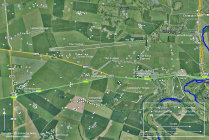
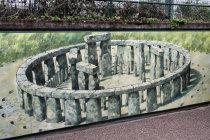
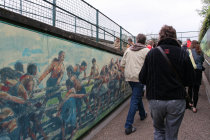
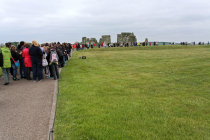
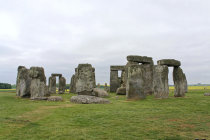
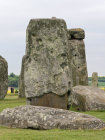
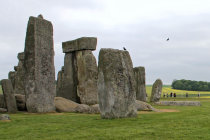
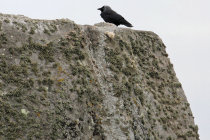
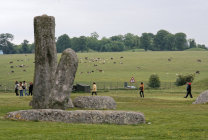
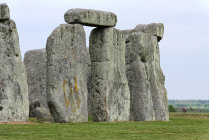
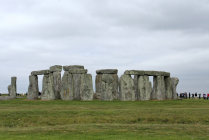
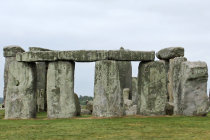
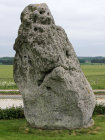
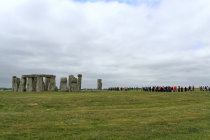
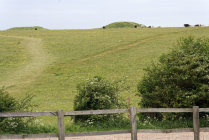

at the visitor center there is this depiction of Stonehenge at its top around 2400 BC
the remaining part of a lintel has been put back in place
weather, flora and fauna slowly but surely wear the stones down
many of the standing stones and lintels are missing, he Romans are known to have used them in their buildings
our first glimpse of Stonehenge and despite the weather we are not the only visitors
the builders were skilled farmers and surely must have used oxen for that hard towing work
to the East there are scores of grave mounds also known as barrows
a last look at this majestic Neolithic monument
the mysterious Heel Stone stands at the entrance of the Avenue to the Avon River
the lintels are connected by tongue and groove joints, 4500 years old solid engineering
of the Great Trilithon only one upright stone is left. The tenon at the top formed a joint with a mortise in the lintel


this plan of the Stonehenge Area indicates the dozens of prehistoric monuments and barrows













some signs of repair






























time for a modern day refreshment



the view from the East, here three original lintels are still in place



































































